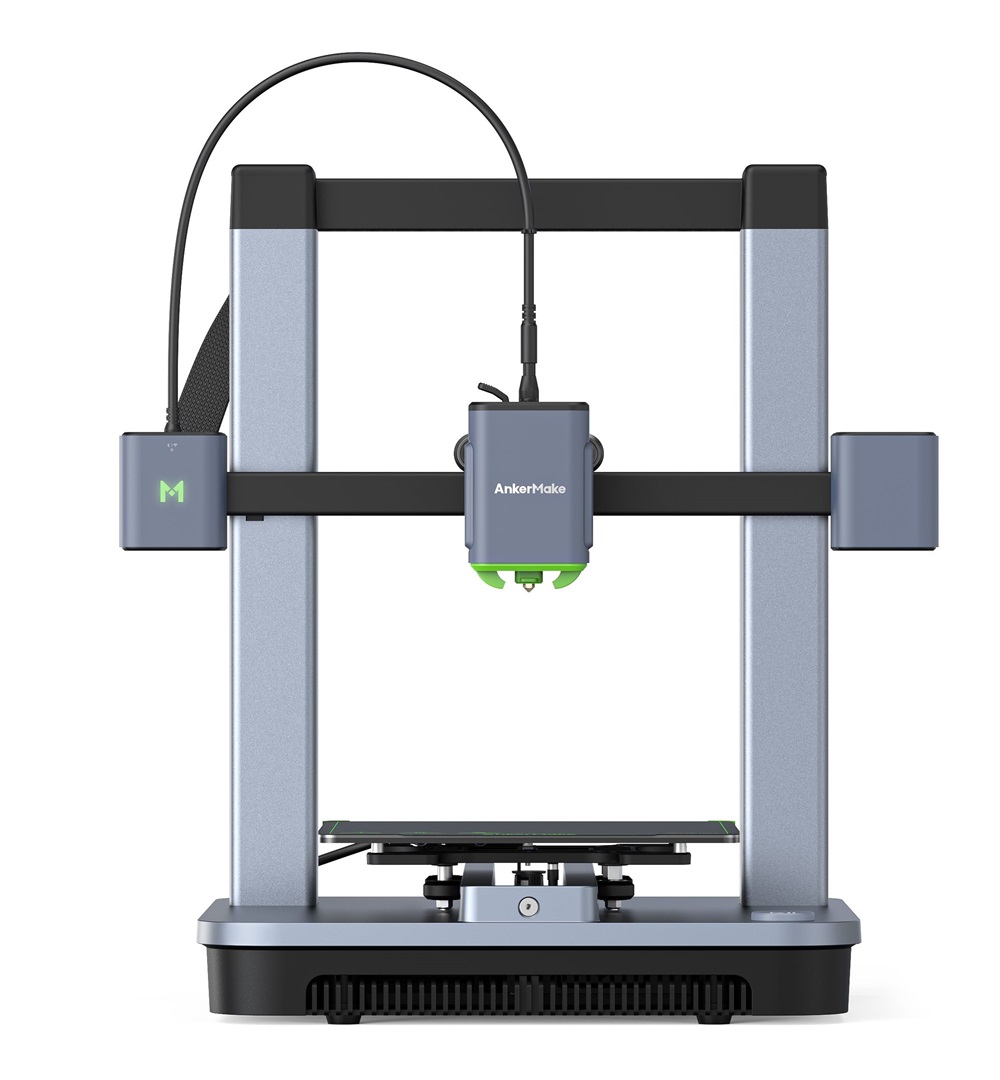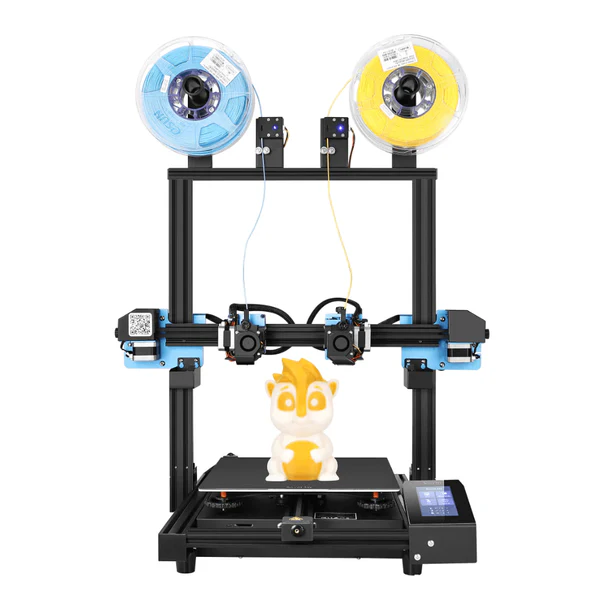Compare M5C vs SV04 IDEX
Comparison between the best 3D printers
Choose the best 3D printer at the best price. The cheapest 3D printers are here.
Buy a 3D printer here with 3D Fila.
 |
 |
|
| Model | M5C[BUY M5C] |
SV04 IDEX[BUY SV04 IDEX] |
| Printing Material | Filament | Filament |
| Buy Filament for AnkerMake M5C | Buy Filament forSovol SV04 IDEX | |
| Estimated price | $399,00 | $259,00 |
| Manufacturer | AnkerMake | Sovol |
| Release Year | 2023 | 2021 |
| Print Volume [mm] | 220x220x250 | 300x300x400 |
| Printer Size [mm] | 466x374x480 | 653x625x803 |
| Weight [kg] | 9,6 | 15 |
| Power Loss Recovery | YES | YES |
| Enclosed printer | NO | NO |
| Bed Leveling | Automatic | Automatic |
| Filament End Sensor | YES | YES |
| Bed type | Heated | Heated |
| Power supply system | Direct Drive | DIrect Drive |
| Standard nozzle | 0,4 | 0,4 |
| Maximum Nozzle Temperature [°C] | 300 | 260 |
| Maximum Bed Temperature [°C] | 100 | 100 |
| Maximum printing speed [mm/s] | 500 | 120 |
| Filament holder | YES | YES |
| Camera for supervision | NO | NO |
| Recommended filaments | PLA, PETG, TPU, ABS, PA, PLA-CF, PETG-CF, PA-CF | PLA, TPU, TPE, HIPS, ABS, PETG, WOOD, PC, PA, PVA, ASA |
| Recommended slicers | AnkerMake Studio (macOS, Windows), Simplify3D, Ultimaker Cura, PrusaSlicer | Cura, Prusa Slicer, Orca |
| Maximum Resolution [mm] | 0,1 | 0,01 |
| Processor | ||
| Display | Touchscreen 4,3'' | |
| Power Supply | 350 W | 500 W |
| Connectivity | Wi-Fi, USB-C, Bluetooth | SD |
| Operating systems | Windows, Linux e Macbook | |
| Date of registration in the system | 2024-09-11 | 2024-11-06 |
| Release date | 2023 | 2021 |
| Extra features | The AnkerMake M5 printer stands out for its impressive print speed, reaching up to 500mm/s. It features AI print monitoring, an integrated camera for creating timelapses, auto-leveling bed with pressure sensor, direct extruder, flexible PEI-coated build plate, and Wi-Fi and USB-C connectivity. Assembly is quick and easy, and the printer is designed to deliver high print quality and ease of use. | The Sovol SV04 IDEX offers 3D printing with independent dual extruders (IDEX), enabling simultaneous multi-color or multi-material printing without filament waste. It features a 300 x 300 x 400 mm build volume, automatic bed leveling, and Titan direct extruders, ideal for flexible materials. Equipped with a flexible magnetic plate, filament run-out sensor, print recovery, and purge buckets for idle filament, it stands out as a versatile and practical option. |
| Support for multiple colors and materials (AMS and CFS) | NO | NO |
Notes * |
||
| Cost-benefit | 7 / 10 | 7 / 10 |
| Hardware | 3.2 / 10 | 2.4 / 10 |
| Tela | . | . |
| Print volume | 3 / 10 | 4 / 10 |
| Performance | 4 / 10 | 1 / 10 |
| [BUY M5C] | [BUY SV04 IDEX] |
Conclusion |
| In conclusion, the comparison between the AnkerMake M5C and the Sovol SV04 IDEX presents two distinct options catering to different user preferences and needs in the 3D printing space. The AnkerMake M5C, while being the more expensive model, excels in print speed, achieving a remarkable maximum speed of 500mm/s, which can significantly streamline the printing process for users prioritizing efficiency. Its advanced features, such as AI monitoring and a user-friendly touchscreen, further enhance the user experience, making it an attractive choice for those seeking modern functionality and ease of use. On the other hand, the Sovol SV04 IDEX, with its independent dual extruders, offers flexibility in multi-material and multi-color printing. This is particularly advantageous for users aiming to experiment with a variety of filaments and intricate designs. Although it has a lower maximum print speed and overall performance ratings compared to the M5C, its larger build volume accommodates bigger projects, which may be more beneficial for certain applications. Ultimately, the choice should hinge on the user’s specific requirements: the AnkerMake M5C is ideal for those who value speed and high-quality output in a compact format, while the Sovol SV04 IDEX stands out for versatility in material and color usage, albeit at a lower speed and performance rating. Both models offer good cost-benefit ratios despite their price differences, ensuring potential buyers can select a 3D printer that aligns best with their distinct printing goals and preferences. |

